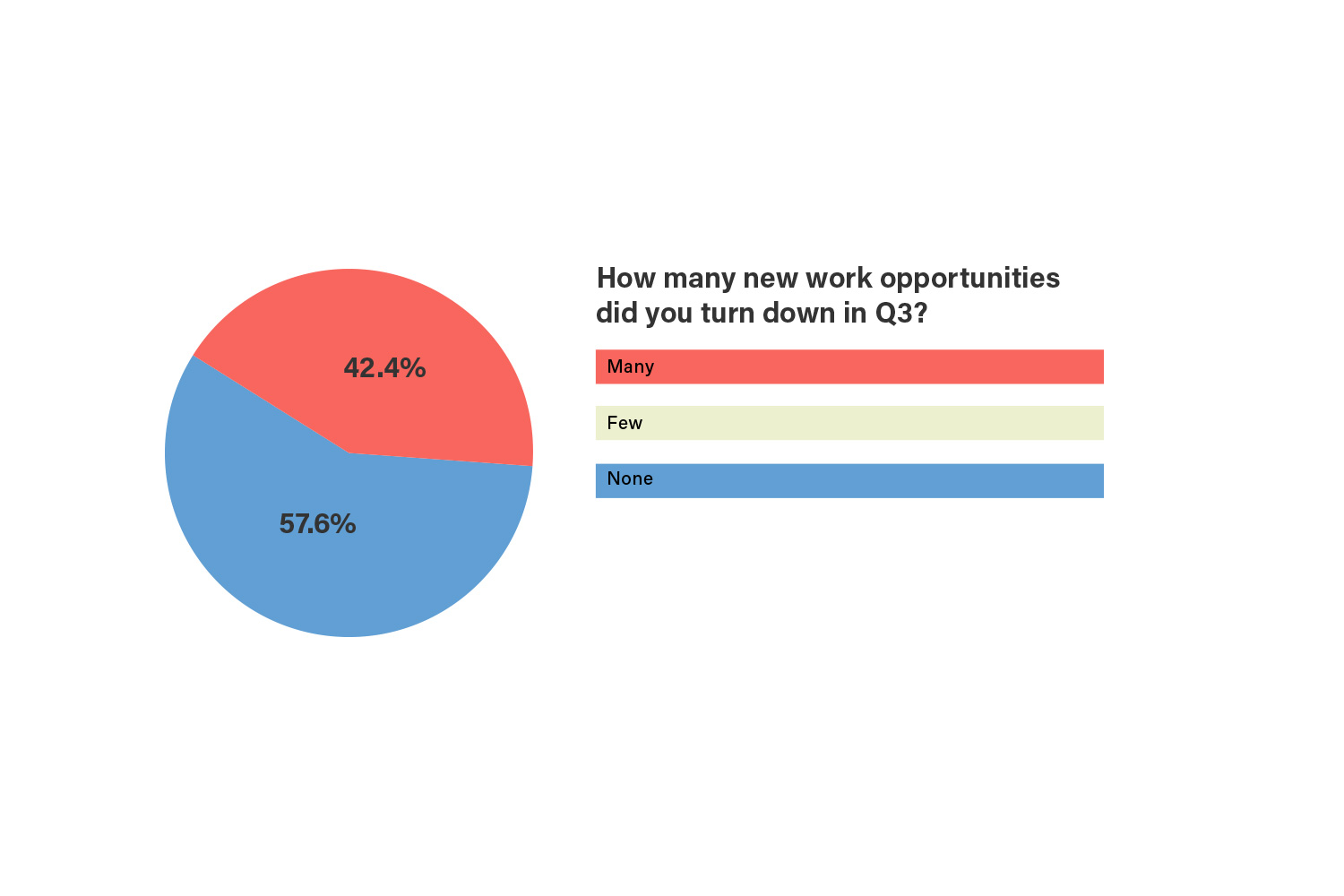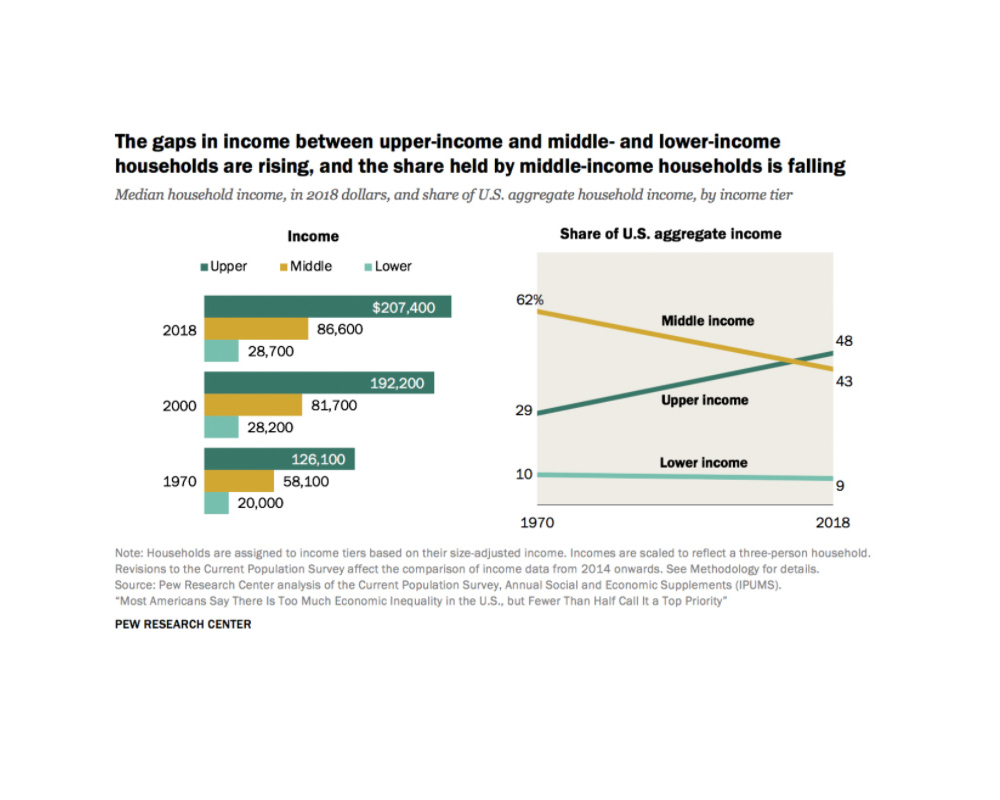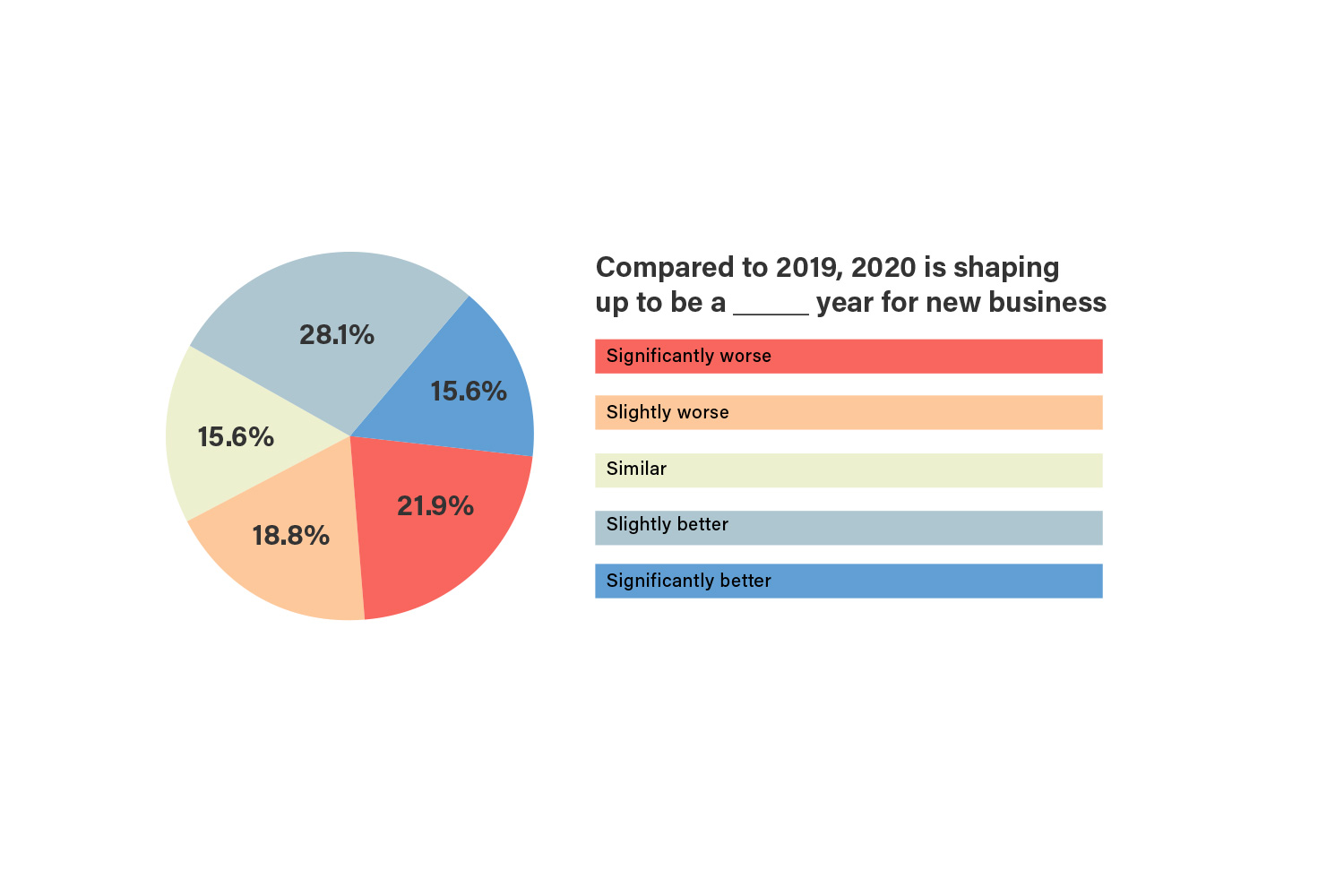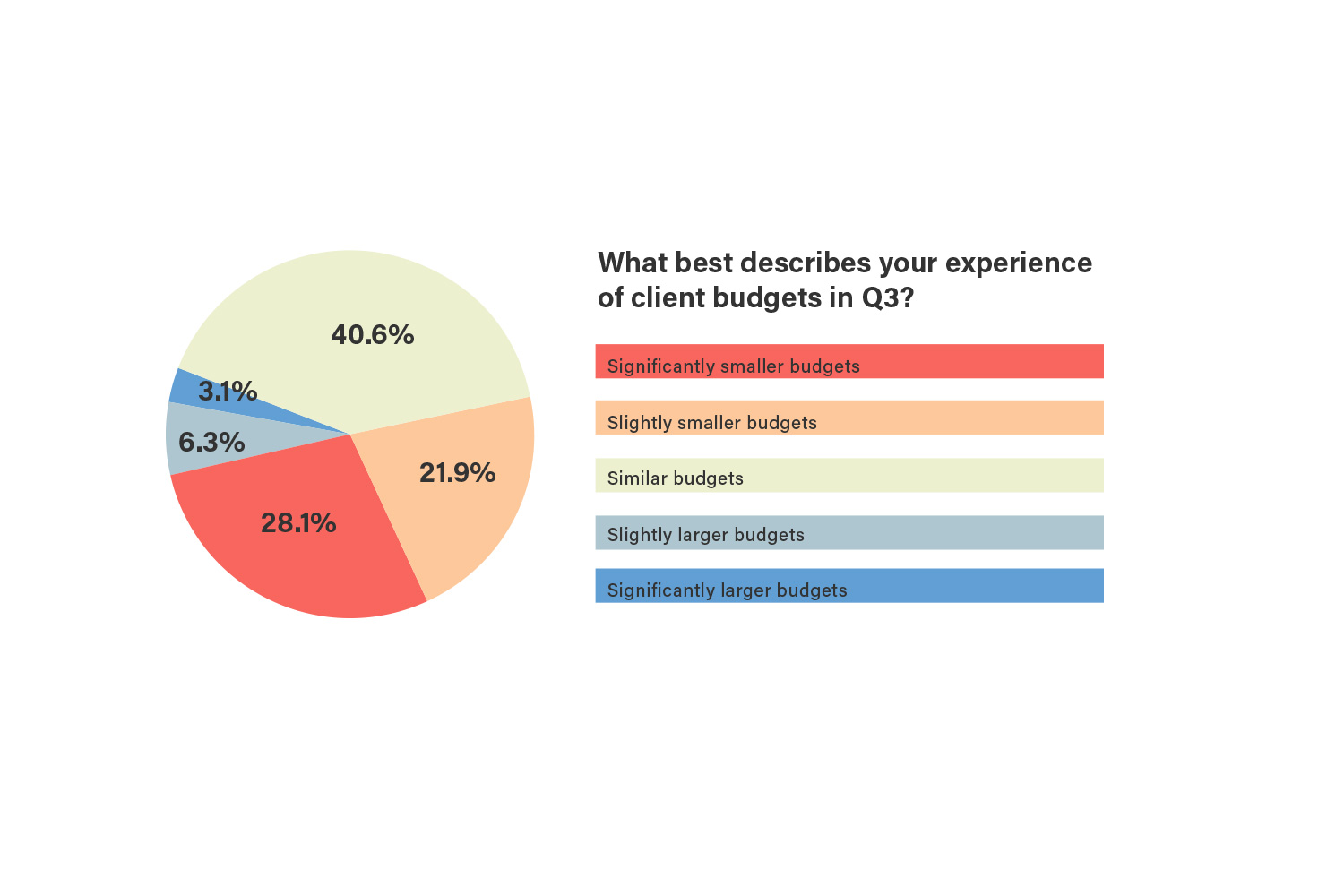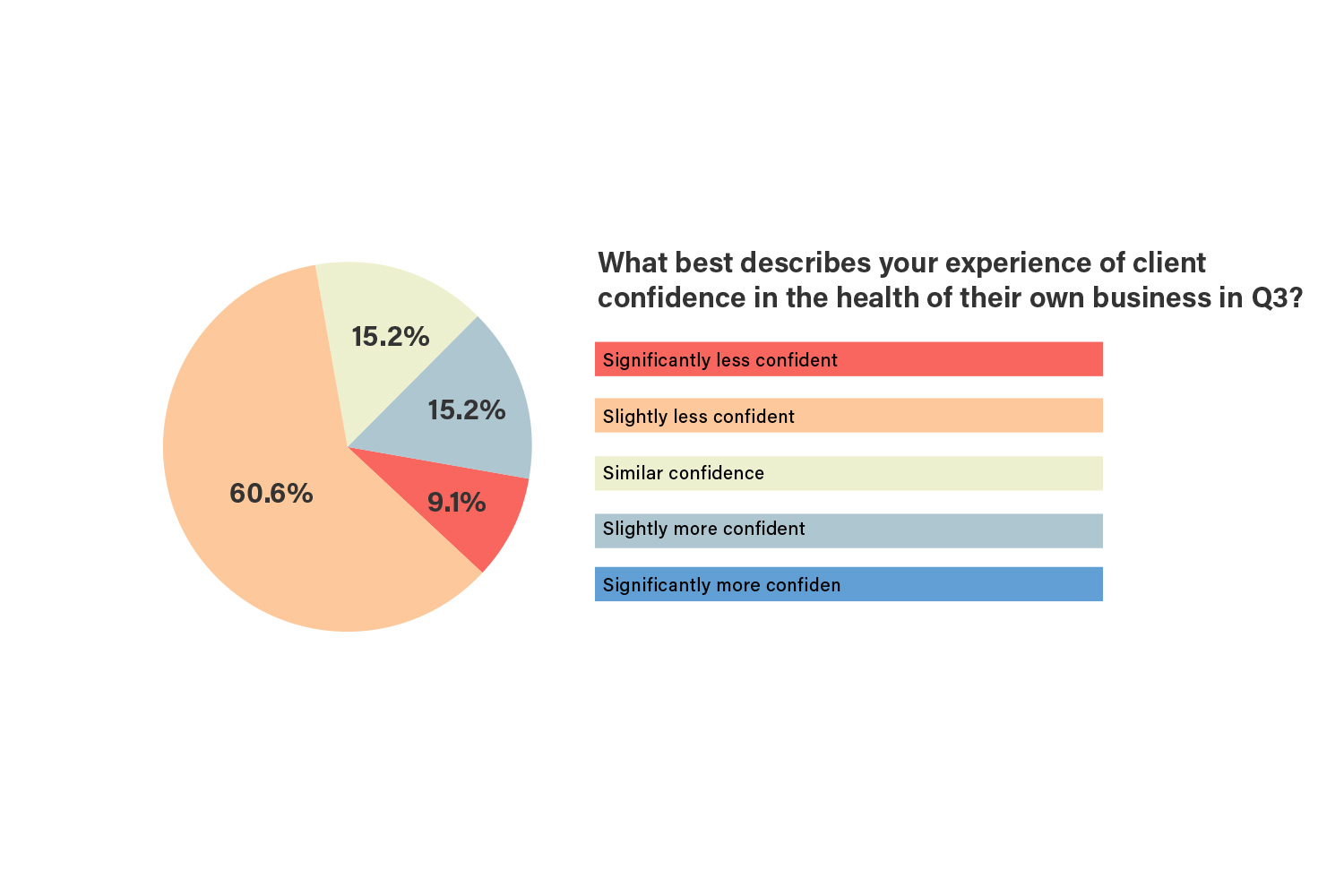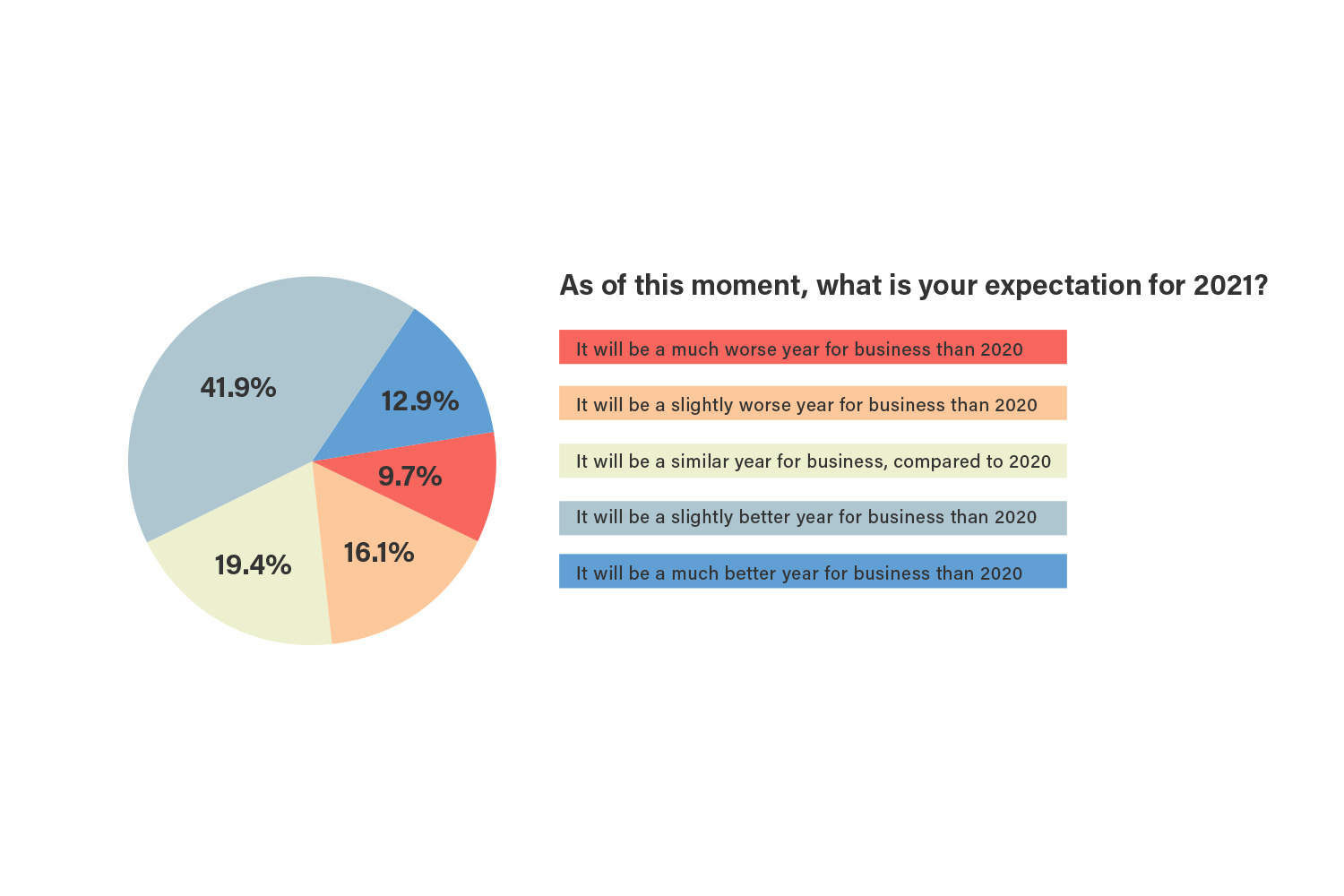A New Age of Everything
Welcome to the Gather Dispatch!
Thank you for taking a look at this, Gather’s first quarterly newsletter. Our goal is to use this space to catalogue the evolution of the “work of work,” as it were, from a perspective which those in our network all share — that of independent practitioners responsible for the growth and longevity of their own business. Be that as freelancers, contractors, entrepreneurs, small business owners, whatever the form, the Gather network is made up of people for whom understanding the contours of the business landscape is part and parcel of logging on to work.
The independent, “white collar,” gig worker holds an advantageous vantage point from which to observe the true workings of the economy and gauge its health. From that perspective, the independent worker gauges which skills and expertise to develop, which work to take up (and which to pass up), and what advice will best help clients find themselves in positions to succeed. It’s also a perspective that represents an increasing percentage of the workforce, whether they identify as such yet or not.
Each quarter, we will explore the point of view of this kind of professional and focus on a single question, inspired by conversations with our clients, peers and network. We will document relevant insights which offer understanding of the present, and indulge in some prognostication. In addition, we will survey our network, and the larger independent-worker community, to measure performance, confidence and outlook, quarter to quarter. We hope the results develop into something that helps us all better understand the work of work, and serves as a resource for all independent workers and their clients.
Thank you for tuning in!
And now, for the topic of our first dispatch: A new age of…something.
Which New Age?
Over the summer, a common view emerged from conversations with business leaders: We are primed to enter a new, golden age of something, be it innovation, imagination or inspiration. Verbiage varied, but the general narrative was consistent: We are on the brink of big change in the way we think, learn, and work.
That’s all well and good (and relatively obvious), but when it comes down to what the word should be, or what the implications are, there surfaced a great range of expectations, optimism and concern. You would never hear quite the same conclusion twice.
We put the inquiry out to the Gather cohort, asked them to divine what new age we are to enter into and to interrogate how this grand narrative of rebirth fits into 2020. Which words ring true? Innovation? Imagination? Inspiration? None of them?
At the heart of the narrative is an assumption borrowed from history: From humanity’s most trying times come transformative advancements, often bunched together. Many of today’s most disruptive companies were founded during the Great Recession (Airbnb and Uber, most infamous among them, embodied disruptive innovation for the last decade). The narrative is that the challenges of 2007–2009 encouraged a deep reimagining of how property, labor, society and technology interact.
For an older (but distressingly relevant) example of this narrative, conventional wisdom holds that the intellectual squalor of The Middle Ages (with the specific nadir of The Black Death) gave way to the Renaissance. In this case, historians seem to be pushing back, a view well articulated (at significant length) in an article which made its way around the Gather network by way of Senior Writer and Content Strategist, Cole Stryker, outlining the many other factors at play in society’s “rebirth” after the Black Death, plus arguing that life after was not necessarily better than it was before.[1] It turns out, even conventional wisdom about the Renaissance is up for debate, which should invite us to look at the current moment from as many angles as possible. It’s clear that we are at the precipice of something, and ascribing a single new age would be a disservice. So let’s try out a couple.
A New Age Of Flexibility
Firsthand accounts from Gather team members offered a wide range of insights and predictions from across a number of industries — healthcare, real estate, media, tech, retail — and whether these were stories of success or failure (as it relates to the hardships post-March 2020) largely came down to leaders acting flexibly. Nimble thinkers did nimble things and captured some value in the moment, or at least mitigated the damage.
By way of example, as Digital Strategist Kathleen McGivney put it to start an email:
I am currently sitting in a Grand Seiko pop-up boutique that was supposed to open at the end of March. They had to change their entire space, accommodating distanced staff, hand sanitizer everywhere, masks required, but in between, they were able to accommodate customers by developing an augmented reality technology that allowed clients to virtually try on watches when they were unable to in person. They innovated in that space (almost nobody in the watch industry is doing that) and adapted their physical space to continue their business.
Grand Seiko’s flexibility served them well, as they redesigned their physical space while also developing digital solutions which should have further impact however the future of physical space plays out.
Gatherers expressed a mix of caution and optimism for how physical space can be redesigned. Beyond companies the bulk of whose customer experience happens in physical space, others who have seen steady or increased productivity after shifting their workforce remote will need to evaluate whether maintaining massive buildings is worth the cost.[2] So what happens to Manhattan when the midtown corporations give up their leases?
Gather writer Kirsten Chen supplied the following hypothesis:
Commercial real estate space like offices and malls — what an opportunity! Instead of floor atop floor of creepy beige carpeting and cubicles, we will witness total enhancement and overhaul: true vertical living! These massive structures will have to be reimagined into destination spaces, e.g. a combination of co-working spaces rented by the week on one floor, hotels on others, restaurants, spas, cinematic experiences, speakeasies. The opportunities are endless. In Japan they tell tourists, “don’t forget to look up,” because the best food and nightlife spots scale the heights of the city. Cities will transform to true innovation and arts hubs again, rather than finance-centric business hubs. Land owners will lower rent leading to a lower cost of doing business.
What happens to our relationship with physical space is clearly at the top of everyone’s mind, but a lot of Gatherers focused on more abstract changes when describing what age we are to enter into. Many pointed to acceleration in existing trends, which is, of course, a whole lot easier to predict than innovations we can’t yet see, but if ever there were a year where contemplating acceleration wasn’t a cop out, it’s this one.
So, what is accelerating? Clearly the move to remote work. That’s a gimme, but there are a lot of other trends caught up in its wake.
A New Age Of Responsibility
Corporate responsibility, social good and a brand’s relationship to political issues have been high-visibility talking points in the thought leadership space for the last four years, with major corporations like Patagonia, Always, and Dove receiving plaudits for marketing work tied to major social issues, leading the push for change, and occasionally rising to the level of active participants in the discourse, as was the case with Nike’s relationship with Colin Kaepernick. [3][4][5][6]
The optimists in our network assigned a rising tide to the trend of Corporate Goodness (for lack of a better term) and a hope that it would carry us into a more equitable future. The pessimists remained as cynical as ever about the distance between messaging and action. Even the most neutral assessors agreed that there is an increased demand from consumers to understand a brand’s place in a political (both capital and lowercase “p”) matrix. It’s difficult to imagine that demand going away in a world after George Floyd’s death.[7] Brands have been pushed into political visibility and that bell cannot be unrung.
Corporate Goodness intersects with the move to remote work at a time where there is already increased scrutiny on the relationship between employers and employees, especially among the gig workers of the world. Years of highly visible discourse around unionization in media and tech arose from a working environment where the fair division of decision-making and reward is up for debate. [8][9] And now, during that debate, comes a moment where businesses are being asked to make challenging, existential, decisions for themselves and their employees.
Beyond the stark (depressing) political divide of policies around mask usage, organizations are being scrutinized for how they plan to keep their workforce safe and provide resources for their at-home-work-life balance. Many Gatherers predict that the story of Q4 will be when and how people return to offices, or at least that will be the B-story under an A-story about the human suffering related to those decisions.
As for the independent working set, this sort of adjudication of corporate responsibility has been an increasingly important part of choices about where to work, especially for more established independent professionals. Those choices have immediate repercussions for organizations who rely on that workforce.
Full time employees are making their voices heard more, but have less of an ability to “walk” behind those values.[10] Independent workers can, and are, declining offers and walking away from situations where corporate values are at odds with their own.[11] Gather’s survey of our own network found that 42% of the respondents had turned down work in so far in 2020, and that over 70% had the same or more opportunities for new work come their way in Q3 as in Q2.
The divide between salaried and independent work is worth spending some time on in this context. In 2018, 36% of U.S. workers participated in the gig economy through either their primary or secondary jobs, per Gallup.[12] That amounts to a lot of work, and a lot of money, in arrangements where there is increasing opportunity for choice on the part of the worker — a lot of projects where skilled workers get to say “no.”
And there is an appetite among freelancers for even more independent work. The Gather Dispatch crew teamed with Boost, a U.S. based startup that helps freelancers build and launch successful businesses, to survey freelancers from different backgrounds and experience levels. The results indicated that twice as many participants were interested in pursuing full-time freelance work as wanted it to only be part of their income. However, only about ten percent more of those surveyed were actually fully independent. This means, in part, that where there is desire to join the ranks of the independent workforce, there is not always the means.
Part-time freelancers cited inconsistent demand, inability to find (or disinterest in finding) new clients, and lack of confidence in their abilities as main reasons for remaining in corporate roles with gigs on the side. Being part of a team, and a desire for health care and benefits, were the positive reasons for staying salaried. The most common stipulation was that workers would make the jump if they could guarantee themselves the same salary, preferring flexibility and deeper relationships with their clients.
David Gaspar, Managing Director at Gather, maintains that some of these choices are falsely perceived as being exclusive.
Working as an independent does not mean giving up on having a team. That’s obviously at the core of how Gather is operated — the idea that we can develop support systems which allow people to work “independent but not alone” to use our favored phrase — but it’s also a more broad misconception. We’ve found again and again that being able to choose your team actually strengthens those bonds and we put a lot of effort into championing organizational practices which allow teams to come together regardless of who sits on what side of which agency or client relationship.
Additionally, the math on income and benefits is a bit skewed in its general perception. To throw off the shackles and “go freelance” does not necessarily mean you need to make the same salary — in fact, as an independent entity, you can often keep more of your income than you would with your wages. And healthcare options are frequently misconceived too. Employees often forget how much of their paycheck is being deducted for employer health coverage. Great plans are available on the open market where choices and flexibility abound.
In this context, where independent work is an increasingly attractive option, Corporate Goodness exists as a conversation with workers as well as consumers. Brands and organizations are being asked to justify their worth, their use of people’s attention, and their use of their own workforce. The more independent the workforce becomes, the more leverage they will have in this equation.
And so this trend accelerates into a winter where there is more under the purview of corporate responsibility than ever. For those looking for organizations to “walk the walk,” it’s hard to find a more clear test of Corporate Goodness (and how important it is to corporate survival) than the literal life-and-death decisions of the next few months.
A New Age Of Efficiency
Robots and computers have been reorganizing human jobs for decades — machines have been doing so since the invention of the wheel, or something else sufficiently antediluvian. (For computers, the starting point could be 1940.) [13] Regardless, the computer has since saved thousands of man hours — and salary dollars — and has contributed to escalating productivity over the course of the last 50 years.[14] However, the story of productivity has grown more complicated in the decade since the Great Recession, as productivity growth seemed to hit a ceiling, a phenomenon which has inspired much theorizing and wringing of hands.[15][16]
One source for optimism, among the conversations we had, was a near-unanimous embrace of the premise that we are at the early stage of an AI revolution which will change the landscape of work, and perhaps put some fuel back into productivity growth.
As always, revolutions introduce new sets of complications, as has held true with the integration of artificial intelligence. In the early 21st century, we have seen artificial intelligence continue to replace workers, driving them into new industries, and force new evaluations of robotic ethics and factory layouts.[17] Government agencies like OSHA and BSI have passed standards and guidelines that corporations must follow to ensure safe and ethical robotics in the workplace.[18][19] Companies — like FORT, a Pennsylvania-based software company — that specialize in robot safety and security consulting are springing up to ensure that robots follow these guidelines.[20]
That’s all interesting and transformative, but there is a good amount of caution tempering the enthusiasm toward the AI revolution. After all, the benefits of transformative technology (especially relating to productivity) justify a skeptical read as it relates to where the benefits of those transformations are seen.
One place skepticism seems overblown is with the familiar boogieman of “robots taking our jobs,” or at least that’s the sentiment shared by most people we spoke with. Most people buy the hype on AI, and agree that a deeper integration of AI is likely to result in the creation of jobs in which people work with AI, rather than jobs in which AI replaces humans. IBM, in particular, has done a great job delivering a consistent message to that end, which has apparently found purchase.[21]
A New Age Of Inequality
This past April, the U.S. set record-breaking unemployment rates, which (though they have dropped substantially from the low of February) are still in dangerous territory .[22] The true gravity of the situation will be told in Q4, as winter temperatures and rising virus cases again force Americans indoors and businesses to close shop.
Over the same period, Walmart has seen their online orders increase by 74%, with Target following close behind.[23][24] Amazon’s online platform has thrived.[25] Simultaneously, small businesses are closing, and staying closed, in alarming numbers.[26] Though new jobs are forming in delivery, content creation, and real estate, the already-growing gap between the rich and the poor continues to widen.[27][28]
Deloitte predicts that this gap will continue to widen at an increasing pace for the foreseeable future, especially within minority communities, where employment is concentrated in low wage occupations like office administration, transportation, personal care, or building maintenance. These employees will not see any wage increases, the consultancy says, while managers, lawyers, scientists, and doctors will receive higher and higher compensation.[29]
So what does this mean for the independent workers of the world? Senior Writer and Content Strategist Cole Stryker put forward a projection that similar bifurcation will continue in what “gig work” means, a widening disparity in resources between people for whom independent work is a choice made from a position of strength and those for whom it is a result of a lack of more traditionally secure options. As you’ll recall from earlier, Boost’s study already gives this observation some credence.
Some of the disparities in outcome will come from which industries succeed and which decline, and where the power in those industries resides. It will be worth monitoring what happens with rideshare drivers, a highly visible part of the gig economy, who experienced drastic decreases in clientele at the beginning of the pandemic, and may not see a substantial return of work for quite some time.[30]
Ridesharing gives us a helpful window into the complications of bifurcation. Just last year, California began to wade into legislation around freelancing by proposing measures which revealed a lack of understanding as to the variety of independent work.[31] It’s difficult to be too critical of them for the failure in the details as independent work is too vast and diverse a thing to be regulated as a unified field, even before the complications of this year’s record unemployment.
Of course, that’s not stopping California from trying — in November, California passed Proposition 22, App-Based Drivers as Contractors and Labor Policies Initiative (2020), which (supported by Uber and Lyft) now ensures that drivers remain contractors.[32] This allows the companies to skirt minimum wage restrictions and maintain the independence of their drivers, who are split on their opinion of being classified as such.[33]
As varied as it is in the details, it’s often tale of two divergent groups when we speak about independent work, a difference tied to larger trends of wealth disparity. There are also meaningful differences in the types of work done by “white collar” independent workers and others in the gig economy. One challenge of conceptualizing the gig economy is to recognize where everyone fits in to its future regulations and categorizations. As we endeavor to define the “work of work” we should be aware of the lines we are drawing and anticipate the repercussions of who those lines include and exclude from meaningful seats at the discussion. In times of crisis, when flexibility is an advantage, it’s important to be mindful of who has access to flexibility and who doesn’t. It’s clear already this year who had the means to thrive, and who is at greater risk. There is warranted concern that Q4 will give us more of the same.
A New Age Of Opportunity
Clearly, the stakes are high. Somewhere in the intersection of responsibility, efficiency, transformative technology and unprecedented circumstance lies an opportunity to participate in shaping the new age of … whatever we can make of it.
As remote work and independent work become more common, organizations and workers will have to shift their strategies, embrace flexibility and contribute to society in ways that have not previously been asked of them. The opportunities are vast. The decisions we make as businesses and workers will directly effect the safety and fairness of our communities in whichever new age we are to enter into. All this, as we move to close out the year and deal with the challenges at present.
Our quarterly Gather survey of independent workers in the Gather network gives us some insights into what is shaping up to be a challenging year, but one that could end up looking like an average or better one for a slight majority of those surveyed.
Almost 60% of respondents are projecting a similar or improved year for their business overall, (relative to 2019) with 50% projecting more revenue. On the other hand, 22% responded that 2020 was projecting as “significantly worse,” with 15% reporting >50% loss in revenue. Clearly, independent work is not entirely independent from the economy, and while some of these numbers are heartening, they are so only with the backdrop of a deeply challenging year for many.
Looking at Q3 through the lens of how independent workers assessed their clients, 50% of survey respondents described client budgets as being down as compared to Q2, with 40% reporting them as “similar.” That left just 10% reporting larger budgets last quarter.
The majority (60%) reported that client confidence in the state of their own business went down slightly in Q3. Only 15% reported that clients felt “slightly more” confident, and nobody reported a significant growth in confidence.
A dip in confidence outpacing significant dips in budget might point to budget lagging as an indicator of this year’s challenges, which is something to keep an eye on in Q4 and into next year.
However, at the moment, respondents are looking to next year with a degree of optimism. More than 50% believe it will be a better year for business, with just 10% fearing it will get much worse.
In the short term, the challenges of 2020 are clear, as are the opportunities. Or, there is at least some clarity in observing that there are a lot of challenges and opportunities both. Let’s be prepared to rise to the occasion.
Bibliography
< Go Back to “Which New Age?”
[1] “Black Death, COVID, and Why We Keep Telling the Myth of a Renaissance Golden Age and Bad Middle Ages.” Ex Urbe, 4 June 2020, www.exurbe.com/black-death-covid-and-why-we-keep-telling-the-myth-of-a-renaissance-golden-age-and-bad-middle-ages/. A detailed article describing misconceptions surrounding the Renaissance as a Golden Age.
< Go Back to “A New Age Of Flexibility”
[2] “Is the WFH the New Normal? The Answer Might Surprise You.” UC Summit, 18 June 2020, ucsummit.com/is-the-wfh-the-new-normal-the-answer-might-surprise-you/. A discussion of the benefits and detriments of a permanent work-from-home society.
< Go Back to “A New Age Of Responsibility”
[3] Evans, Jonathan. “The Full Story Behind Patagonia’s ‘Vote the Assholes Out’ Tags.” Esquire, 19 Sept. 2020, www.esquire.com/style/mens-fashion/a34078539/patagonia-vote-the-assholes-out-shorts-tag-meaning/. Patagonia’s “Vote the Assholes Out” campaign, explained.
[4] “Our Epic Battle #LikeAGirl.” Always®, 2014, www.always.com/en-us/about-us/our-epic-battle-like-a-girl. The Always #LikeAGirl campaign rages an epic battle to empower confidence in the next generation of females.
[5] “Dove Men+Care Partners With NBPA.” HAPPI, 2020, www.happi.com/contents/view_breaking-news/2020-09-15/dove-mencare-partners-with-nbpa/. This article details the partnership between Dove Men+Care and the National Basketball Players Association (NBPA) to create messages around empowering black men.
[6] Cobb, Jelani. “Behind Nike’s Decision to Stand by Colin Kaepernick.” The New Yorker, The New Yorker, 4 Sept. 2018, www.newyorker.com/news/daily-comment/behind-nikes-decision-to-stand-by-colin-kaepernick. A look inside Colin Kaepernick’s battle to stand up for the rights of minorities in the United States and Nike’s decision to support him.
[7] “How Brands and Agencies Responded to Racial Injustice in the First Month Following George Floyd’s Death.” Ad Age, 7 July 2020, adage.com/article/cmo-strategy/how-brands-and-agencies-responded-racial-injustice-first-month-following-george-floyds-death/2265626. Archived blog tracking how marketers, media companies and agencies took a stand against racism in the period to June 30, 2020.
[8] Smith, Ben. “How a New Breed of Union Activists Is Changing the Rules (and Newsrooms).” The New York Times, The New York Times, 4 May 2020, www.nytimes.com/2020/05/03/business/media/coronavirus-union-newsrooms.html. Background information regarding contemporary unionization.
[9] Covert, Bryce. “How Kickstarter Employees Formed a Union.” Wired, Conde Nast, 27 May 2020, www.wired.com/story/how-kickstarter-employees-formed-union/. Details about Kickstarter employees’ push for unionization.
[10] Hamilton, Isobel Asher. “Facebook Publicly Tears Itself Apart over Mark Zuckerberg’s Decision to Keep up Trump’s Posts about the George Floyd Protests.” Business Insider, Business Insider, 1 June 2020, www.businessinsider.com/internal-strife-facebook-zuckerberg-trump-2020-6. Facebook CEO Mark Zuckerberg’s decision to leave up President Trump’s post threatening US protestors has enraged many employees.
[11] Bowles, Nellie. “’I Don’t Really Want to Work for Facebook.’ So Say Some Computer Science Students.” The New York Times, The New York Times, 15 Nov. 2018, www.nytimes.com/2018/11/15/technology/jobs-facebook-computer-science-students.html. Young computer scientists are increasingly unattracted to working at Facebook, where employees are increasingly dissatisfied with working conditions and products.
[12] “Put the Gig Economy to Work for You.” Gallup, 13 Oct. 2020, www.gallup.com/workplace/240878/gig-economy-paper-2018.aspx. A service that uncovers gig workers’ unique needs in order to manage, motivate and engage them and to see better business outcomes as a result.
< Go Back to “A New Age Of Efficiency”
[13] “The Turing-Welchman Bombe.” The National Museum of Computing, www.tnmoc.org/bombe. Detailed history of the creation and implementation of the WWII decoder Turing-Welchman Bombe Machine, now on display at the National Museum of Computing.
[14] Staff, EPI. “The Productivity–Pay Gap.” Economic Policy Institute, July 2019, www.epi.org/productivity-pay-gap/. Charts and data supporting the hypothesis that there is a drastically increasing productivity-pay gap in the US.
[15] “Why Is Productivity Growth so Weak? 23 Economic Experts Weigh In.” Economic Forecasts from the World’s Leading Economists, FocusEconomics, 20 Apr. 2017, www.focus-economics.com/blog/why-is-productivity-growth-so-low-23-economic-experts-weigh-in. Data and theories from experts around the world, discussing productivity growth in economics.
[16] Remes, Jaana, et al. “Solving the Productivity Puzzle.” McKinsey & Company, McKinsey & Company, 23 July 2020, www.mckinsey.com/featured-insights/regions-in-focus/solving-the-productivity-puzzle. New research shows three factors creating historically low productivity growth, but the research also shows potential for two percent or more recovery.
[17] Francis, Sam. “Robot Ethics: Three Things Industry Can Learn from New Robotic Standards.” Robotics & Automation News, 2 Mar. 2017, roboticsandautomationnews.com/2017/03/02/what-we-can-learn-from-robot-ethics-three-things-industry-can-learn-from-new-robotic-standards/11675/.
This article details modern standards for robotic ethics in the workplace.
[18] “OSHA Robotics Standards.” Safety and Health Topics | Robotics – Standards | Occupational Safety and Health Administration, OSHA, 21 Sept. 1987, www.osha.gov/SLTC/robotics/standards.html. OSHA guidelines for compliance officers, employers, and employees for the safe operation and use of robots and robotic systems.
[19] “BS 8611:2016.” BS 8611, bsi, Apr. 2016, shop.bsigroup.com/ProductDetail/?pid=000000000030320089. Guidelines for the identification of potential ethical harm arising from the growing number of robots and autonomous systems being used in everyday life.
[20] “Could Your Robot Hurt Someone?” FORT Robotics, 16 Sept. 2020, fortrobotics.com/robot-safety/. FORT Robotics consults with robotic and autonomous system users to create safe conditions for development and deployment.
[21] Harrison, Sara. “AI May Not Kill Your Job-Just Change It.” Wired, Conde Nast, 31 Oct. 2019, www.wired.com/story/ai-not-kill-job-change-it/. A report from MIT and IBM says not to fear robots, but the algorithms replacing tasks able to be automated.
< Go back to “A New Age Of Inequality”
[22] “Charts Related to the Latest ‘The Employment Situation’ News Release | More Chart Packages.” Civilian Unemployment Rate, U.S. Bureau of Labor Statistics, 19 Oct. 2020, www.bls.gov/charts/employment-situation/civilian-unemployment-rate.htm. Seasonally adjusted civilian unemployment rate charts.
[23] Wahba, Phil. “Walmart’s Online Sales Surge during the Pandemic, Bolstering Its Place as a Strong No. 2 to Amazon.” Fortune, Fortune, 20 May 2020, fortune.com/2020/05/19/walmart-online-sales-amazon-ecommerce/. Walmart and Amazon have bolstered online business to thrive during the pandemic.
[24] Friedman, Gillian. “Big-Box Retailers’ Profits Surge as Pandemic Marches On.” Big-Box Retailers’ Profits Surge as Pandemic Marches On, The New York Times, 19 Aug. 2020, www.nytimes.com/2020/08/19/business/coronavirus-walmart-target-home-depot.html Walmart and Target reported record sales in the second quarter, driven by the convenience of one-stop shopping and their e-commerce operations.
[25] Semuels, Alana. Many Companies Won’t Survive the Pandemic. Amazon Will Emerge Stronger Than Ever, Time, 28 July 2020, time.com/5870826/amazon-coronavirus-jeff-bezos-congress/. Amazon’s online digital sales enables the sales giant to thrive during the pandemic.
[26] Sundaram, Anjali. “Yelp Data Shows 60% of Business Closures Due to the Coronavirus Pandemic Are Now Permanent.” CNBC, 16 Sept. 2020, www.cnbc.com/2020/09/16/yelp-data-shows-60percent-of-business-closures-due-to-the-coronavirus-pandemic-are-now-permanent.html. Yelp shares data describing the permanence of business closures due to the COVID-19 pandemic.
[27] Horowitz, Juliana Menasce, et al. “Trends in U.S. Income and Wealth Inequality.” Social & Demographic Trends, Pew Research Center, 17 Aug. 2020, www.pewsocialtrends.org/2020/01/09/trends-in-income-and-wealth-inequality/. A paper detailing trends in household income and wealth inequality.
[28] Parker, Kim, et al. “Economic Fallout From COVID-19 Continues To Hit Lower-Income Americans the Hardest.” Social & Demographic Trends, Pew Research Center, 24 Sept. 2020, www.pewsocialtrends.org/2020/09/24/economic-fallout-from-covid-19-continues-to-hit-lower-income-americans-the-hardest/. Pew data shows that half of adults who say they lost a job due to the coronavirus outbreak are still unemployed.
[29] Buckley, Patricia, and Akrur Barua. “COVID-19’s Impact on US Income Inequality: It’s Going to Get Worse before It Gets Better.” Deloitte Insights, 23 July 2020, www2.deloitte.com/us/en/insights/economy/issues-by-the-numbers/covid-19-impact-on-income-inequality.html. Deloitte research shows Blacks and Hispanics, disproportionately employed in low-paying occupations, are more likely to have been disrupted by COVID-19.
[30] “Uber Drivers Struggling to Survive amid Coronavirus Pandemic: DW: 07.08.2020.” Deutsche Welle, 2020, www.dw.com/en/uber-drivers-struggling-to-survive-amid-coronavirus-pandemic/av-54481354. Bookings at ride hailing app Uber nosedived amid national lockdowns, causing the incomes of drivers to almost dry up.
[31] Wagner, David. “Here’s How AB5, California’s New Freelancer Law, Could Affect You.” LAist, 31 Dec. 2019, laist.com/2019/12/31/ab5_california_gig_economy_workers_uber_lyft_freelance_writers_musicians_dynamex_lorena_gonzalez.php. This article describes the widespread impacts of California AB5, which rewrites the rules of freelance and gig work in California.
[32] “California Proposition 22, App-Based Drivers as Contractors and Labor Policies Initiative (2020).” Ballotpedia, 2020, ballotpedia.org/California_Proposition_22,_App-Based_Drivers_as_Contractors_and_Labor_Policies_Initiative_(2020). California Proposition 22, App-Based Drivers as Contractors and Labor Policies Initiative, is on the ballot in California for the 2020 election.
[33] Sammon, Alexander. “California Proposition 22, App-Based Drivers as Contractors and Labor Policies Initiative (2020).” Ballotpedia, 5 Oct. 2020, ballotpedia.org/California_Proposition_22,_App-Based_Drivers_as_Contractors_and_Labor_Policies_Initiative_(2020). Uber and Lyft incentivize employees to back California Proposition 22 to improve efficiency.
